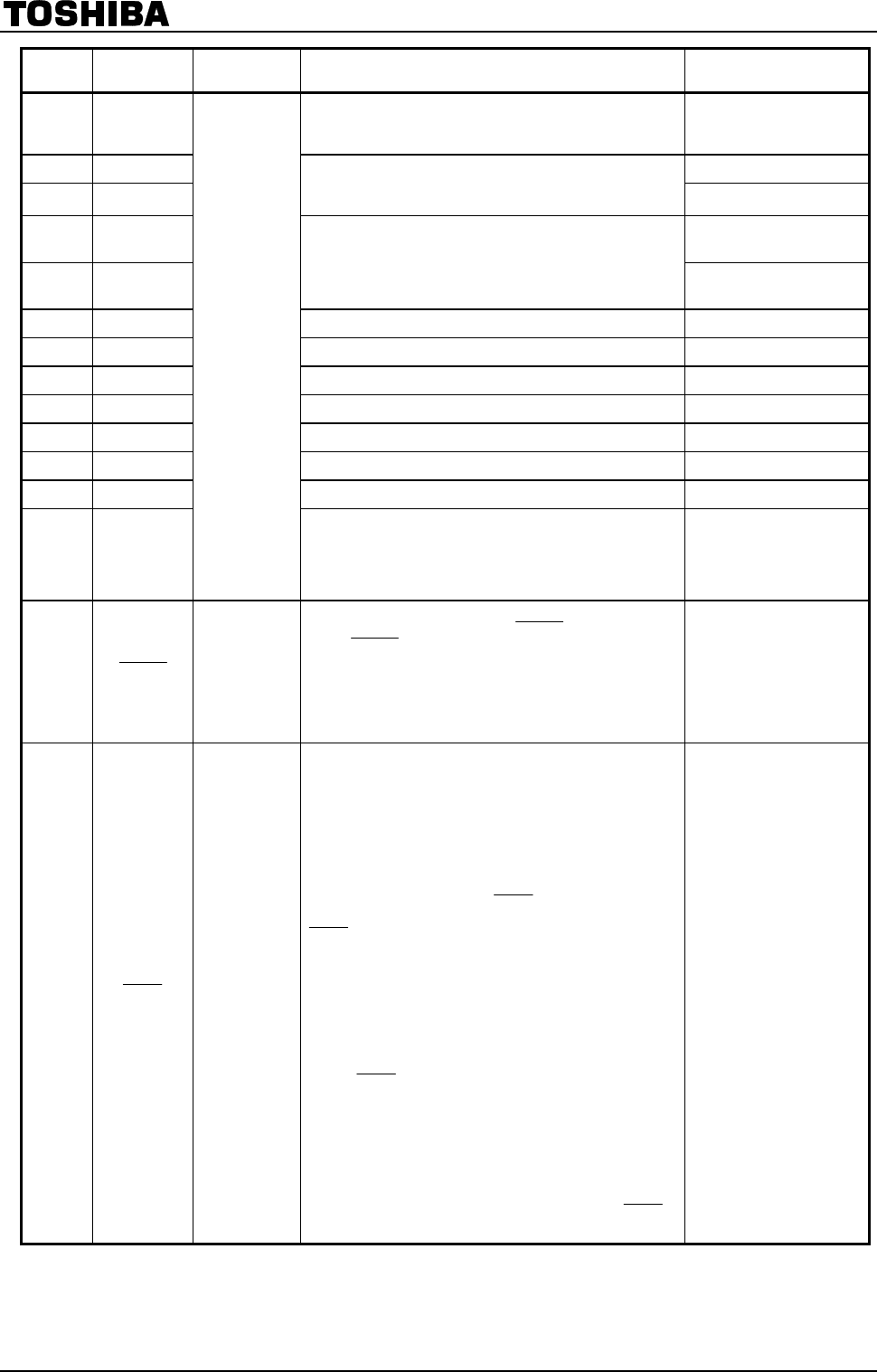
TC9457F
2002-10-21
8
Pin No. Symbol Pin Name Function And Operation Remarks
74 SEL
APC circuit on/off signal output pin. When laser is on, this
pin goes to a high-impedance state when UHS = low and
outputs a high when UHS = high.
―
77 XV
SS
―
80 XV
DD
CD's crystal oscillator power supply pins. Normally,
connect these pins to the power supply lines that are used
in common for the V
DD
and V
SS
pins.
―
78 XI ―
79 XO
CD's crystal oscillator input/output pins. Normally, connect
16.9344 MHz here. This clock is used as the system clock
for the CD. After a system reset, it also is used as the
system clock on the controller side. Therefore, all of the
CD power supplies must be fed with power after a reset.
―
81 DVSR R-channel DA converter unit ground pin. ―
82 RO R-channel data forward output pin. ―
83 DVRR R-channel reference voltage pin. ―
84 DV
DD
DA converter unit power supply pin. ―
85 DVRL L-channel reference voltage pin. ―
86 LO L-channel data forward output pin. ―
87 DVSL L-channel DA converter unit ground pin. ―
88, 89 NC
CD control
input/outputs
NC pins. Normally, connect these pins to ground or leave
them open. Pin 89 serves dual purposes as the V
pp
pin of
an E
2
PROM product. Therefore, when this pin is left open,
it can be shared with an E
2
PROM product.
―
90 RESET Reset input
Device's system reset signal input pin.
The device remains reset while
RESET is held low and
when
RESET is released back high, the CD unit
becomes operational and the program starts from address
0. Normally, a system reset is asserted when a voltage of
2.7 V or more is applied to V
DD
when it is at 0 V
(power-on reset). Therefore, this pin must be pulled high
when used for this purpose.
―
91 HOLD
Hold mode
control input
This pin is used to input a signal that requests or clears
the hold mode.
Normally, use this pin for CD mode select signal input or
battery detection signal input.
There are two hold modes : clock stop mode (crystal
oscillator turned off) and a wait mode (CPU stopped).
These modes are entered by executing the CKSTP and
WAIT instructions, respectively.
The clock stop mode can be requested by a programmed
input: low level detection on
HOLD pin or forced
execution, and can be cleared by detecting a high on the
HOLD pin or a change of state in its input signal. When
the CKSTP instruction is executed, the clock generator
and the CPU stop operating and the device is placed in a
memory backup state. During this state, the device's
current consumption is reduced to 1µA or less. At the
same time, the display output and CMOS output ports are
automatically set low, and the Nch open-drain outputs are
turned off.
The wait mode is executed regardless of the input state
on the
HOLD pin, with the device's current consumption
reduced. In this mode, the user can choose to keep only
the crystal oscillator operating or have the CPU paused by
programming.
If the former is selected, all display outputs are set low
and other pins retain their state ; if the latter is selected, all
states are retained except that the CPU is temporarily
stopped.
This mode is cleared by a change of state in the
HOLD
input.
―


















